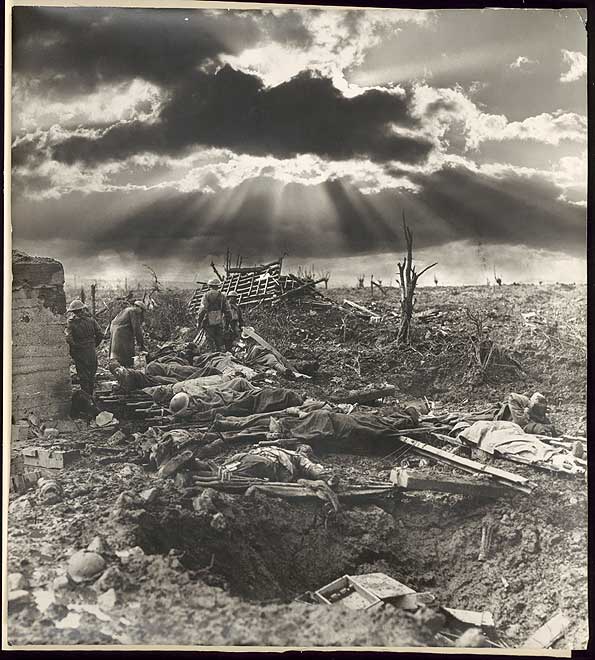 Morning at Passchendaele, 1917
Morning at Passchendaele, 1917
TLF ID R2924
This is a black-and-white composite photograph, taken by Frank Hurley on the morning after the first battle of Passchendaele during the First World War, showing Australian infantry survivors laying out and placing blankets over dead soldiers around a blockhouse near the site of Zonnebeke Railway Station in Belgium on 12 October 1917. In the background the sun's rays shine from behind a threatening cloud. The photograph measures 5 cm x 48.8 cm.
